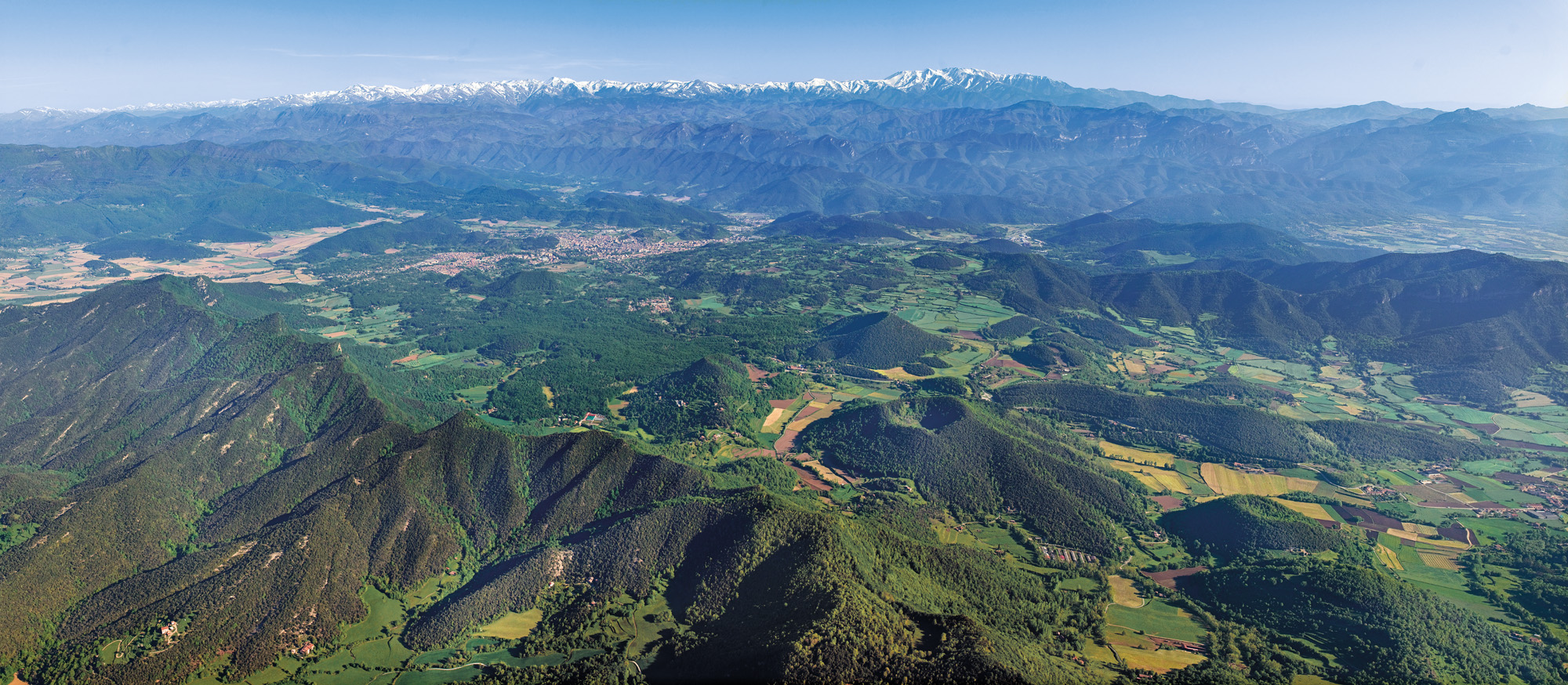La Garrotxa Territori Resilient

Historically, the geography of the region La Garrotxa shaped the collaborative relations among villages.

Type: Region
Population: 55,999
Extension: 735 km2
Density: 76 inhabitants per sq. Km
Key Aspects
A CASE OF COMPLEXITY:
As a pilot for Municipalities in Transition, La Garrotxa presents a complex and exciting case study, given that it is not just one municipality working towards a transition model, but a region of twenty-one municipalities which have a long history of working together on the main issues that concern them.
ENGAGED CONSORTIUMS:
There are currently three main consortiums that manage the majority of services in the Garrotxa region, specialising in the three pilars of sustainability: economy, enviroment and social work.
ACTIVE CIVIL SOCIETY:
At the same time there is a huge network of social movements for such a small population. We have 582 active local organisations and collectives, covering a wide range of volunteer work.
EXPERIENCED CORE TEAM:
- Resilience Earth SCCL, a non for profit cooperative doing work on community resilience, regenerative development and social economy; and
- ADRINOC, the local agency for rural development that works in 75 municipalities.
TRANSITION POTENTIAL:
- Civil society and small family industry exist alongside a rich natural landscape.
- Even though globalistaion has effected most of Europe, La Garrotxa has been capable of maintain a strong level of identity and singularity.
- In a context of high diversity and tensions between sectors of society, there are still encouraging examples of dialogue and joint action.
Context
La Garrotxa region lies at the foothills of the Pyrinees, in north-eastern Catalonia. Two totally different types of landscapes mark the region. The souther part is marked by covered by 40 volcanoes and numerous lava flows, which are protected by the La Garrotxa Volcanic Zone Natural Park. Abrupt cliffs and narrow gorges herald the entrance to the northern part, the Alta Garrotxa, an area that has been declared a national Area of Natural Interest.
This biodiverse region draws tens of thousands of tourists a year, making the service sector the biggest regional employer, providing work to 54% of the employed population. Of the rest, 36% are employed by the industrial sector, 6% by the construction sector and 3% by the agricultural sector. Garrotxa has a 66% employment rate and 10% unemployment rate, resulting in 24% of adults being economically inactive.
Despite these figures, La Garrotxa has shown a fair amount of resilience after the 2008 economical crisis, with over 85% of the business still being small or medium companies.
At the social level, La Garrotxa has a lot of cultural diversity. In the last 10 years, there has been a significant exodus of youth leaving for the cities, but this has been balanced by a significant increase in immigrants to the region. The newcomer population is now at 14%, the majority hailing from India, Morocco, China, Romania, Gambia and Honduras.
As previously mentioned, the civil society is probably one of the most amazing treasures of La Garrotxa, with almost 600 associations actively creating culture, engaging in sports and promoting social and ecological values.
Challenges
- The main socio-economic challenges are unemployment amongst newcomer women, single mothers and youth under 30 years of age.
- Outside of major towns, rural residents face major challenges due to the lack of accessible social services, and the lack of regular and affordable public transport.
- An emerging local challenge is the social, economic, political and cultural exclusion of visible minorities and newcomers.
- The majority of youth emmigrate to the cities for higher education and work.
- The main ecological challenges involve environmental contamination of soil, water and air by the region’s main industries: meat slaughter and meat processing factories, plastic and metal factories, and textile and paper
factories. - Most of the agriculture uses conventional practices, which are overusing and contamitanig undergorund aquifers.
- In recent years, the arrival of major supermarkets has weakened local comerce, leaving some towns with only one shop.
Pilot activities so far...
Address
Resilience Earth SCCLCentre Núria Social
carrer del Carme 8, 1er
17800 Olot, Girona, SPAIN
ADRINOC
Av. Onze de Setembre, 22, 2a planta
17800 Olot, Girona, SPAIN
Contact
Tutor:
Juan del Río San Pío (MiT Project Core Team)
Pilot’s Core Team:
Òscar Gussinyer (Resilience Earth Cooperative)
Erika Zárate (Resilience Earth Cooperative)
Jordi Terrades (ADRINOC Rural Development Association)